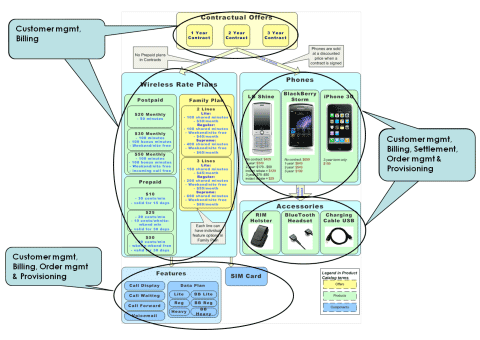|
|

article page
| 1 | 2 | 3 | 4 | 5 | 6 | 7 |The capability to provide a consistent experience to its customers regardless of sales channel, and to be able to reliably launch new services, strengthens another intangible: the CSP’s brand. Some CSPs do not engender brand loyalty beyond the lock-in created by app stores, service contracts, and network coverage. But brand loyalty does exist in other industries, where it drives higher revenues based on the well-deserved trust of a consistent experience. By deploying a unified service management platform, CSPs can realize these brand benefits and more.
The challenge of providing a high-quality customer experience is greater than it was in the past for three primary reasons. First, CSPs are deploying a larger number of sales channels, especially self-care portals for both consumer and enterprise customers. Second, products, services and offerings themselves are more complex, as they are created from multiple services such as video, broadband, voice, IP, and data services. Third, competition and economic changes are forcing an increased focus on profitability—not simply revenue—of services. This means that cost data, which in the past was often overlooked, must be managed as well as revenue information.
Together, these sources of increased complexity explain the increase in order fallout and decreases in customer experience quality and consistency faced by many carriers. Fortunately, recent technology advances have increased the sophistication of the systems that manage the “front end” of customer experience. When deployed correctly, they have been proven to solve many of these issues, even given the complexities of the sales process today.
Definitions
A few definitions are helpful at this point:
Service: Functionality supported by a network. Examples: broadband, VOIP. In a mobile network, one type of service is called a feature, such as voice mail.
Product: A service to which pricing information has been added. Example: High-speed residential internet.
Offer: Special pricing or bundling of a product, sometimes offered on a limited-time basis. Example: Family Unlimited Plan
|
|
The challenge of providing a high-quality customer experience is greater than it was in the past. |
|

Given these distinctions, a Service Catalog contains some or all services offered by a CSP. A Product Catalog contains versions of those services for which some or all pricing and/or bundling has been determined. It may also contain offer information. For instance, a residential product manager may determine that offering $19.95 high-speed residential internet is a good idea, and may add it to the product catalog.
Finally, we use the term Unified Sales Management to refer to an approach that manages the entire sales process, including brand management, orders, offers, services, and products, offered through multiple channels, with a goal towards high quality and consistency of the customer’s experiences. For the service provider, the goal of unified sales management is to be able to quickly offer high-revenue services at an acceptable cost, and to explicitly measure the profitability of those services to maximize stakeholder benefits.
Today’s Barriers to Unified Sales Management
To understand how to achieve the improvements in customer experience described above, it is important to first understand the barriers in place today that must be overcome. These include:
- Product, service, and offer complexity: As illustrated below, a typical product offering has many moving parts, including (in this example of a mobile offering) management of multiple contracts, handsets, rate plans, and features. In this figure, products (shown in green, example: $20 postpaid plan) are assembled from a number of service components (shown in blue, example: call waiting feature) and sold to market through offers (shown in yellow, example: 2 line family plan). To create a new product or offer, and then to activate it on the network, requires interfaces to dozens of systems, including billing and CRM as well as the network itself (blue boxes to the side).
article page
| 1 | 2 | 3 | 4 | 5 | 6 | 7 |
|
|
|
|
| |
|
|




